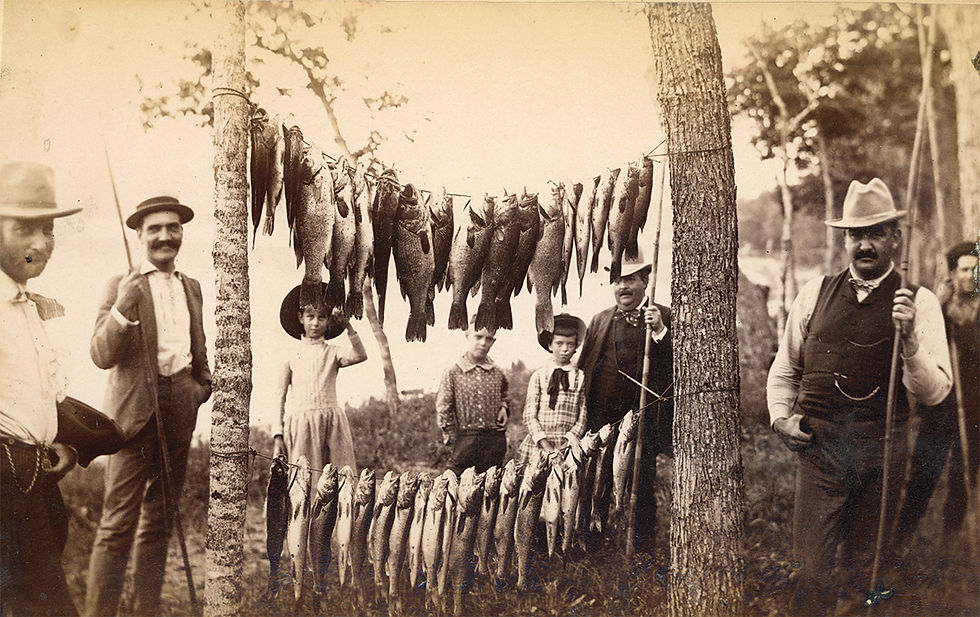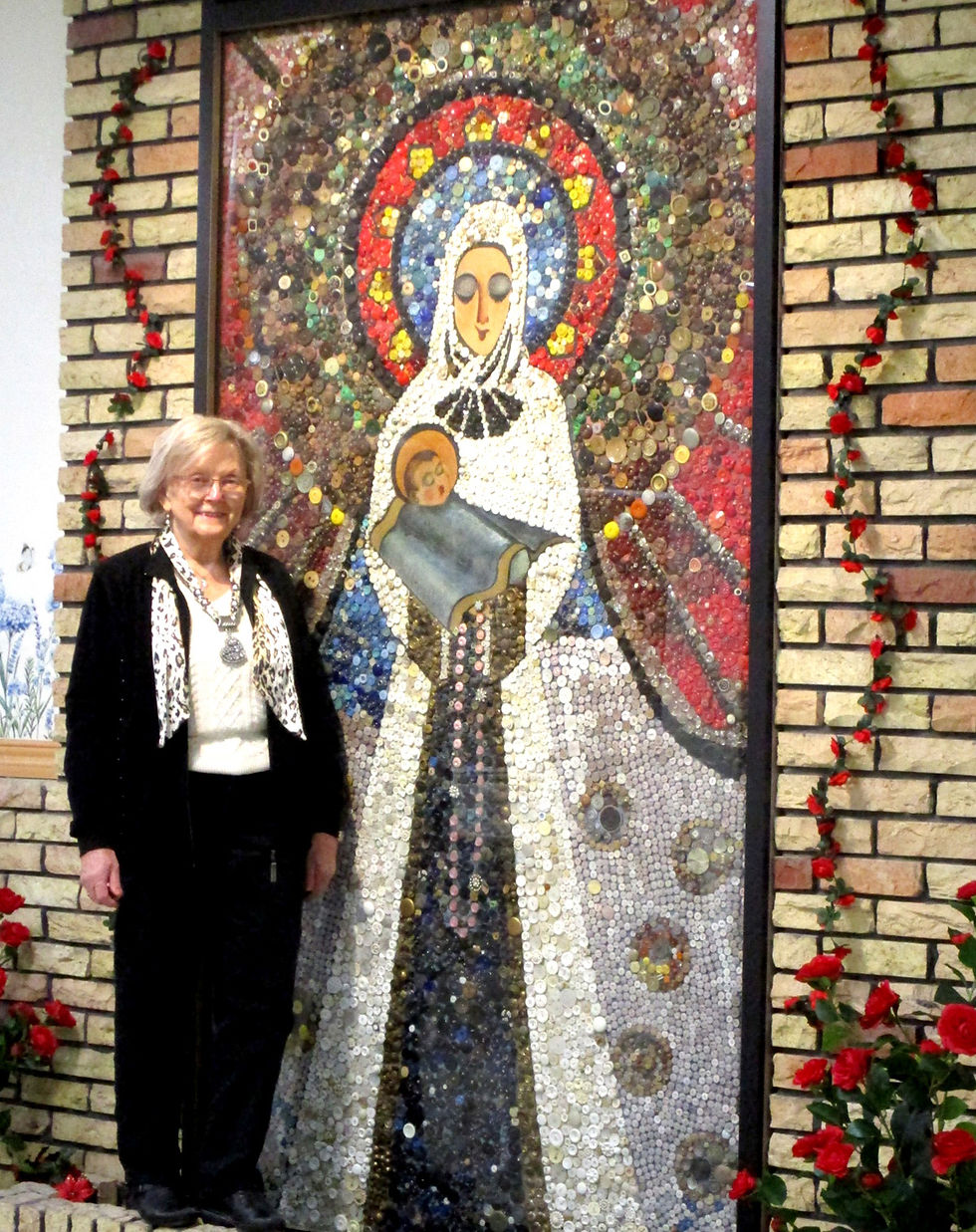A grand history of bandstands
- Sr Perspective

- Sep 3, 2020
- 5 min read
By Nancy Leasman

The Clarissa Community Club was following national trends when on Feb. 26, 1925, it appointed a committee to make improvements to the city park. This committee met on April 2 of that year with the first directive to... “build a fine substantial grandstand of permanent construction, well lighted.” The intent was to provide a place for the Clarissa Juvenile Band to give outdoor concerts during the summer months.
Clarissa called the structure a grandstand, though most other communities constructed “bandstands” and “bandshells.” As the trend took hold there was a building frenzy across the pre WWI nation, which then diminished after 1918, though many were still made into the 1920s and 1930s. Construction stopped during the Dust Bowl years and the Great Depression though communities were buoyed by the music and other gatherings around their existing village focal points.
In those years, nearly every small town had a band shell in which its community band played. Though the terms “bandshell” and “bandstand” were used interchangeably, a true band shell has a back for better acoustics while a bandstand is open on all sides. Many were open to the elements, providing shade to performers, while others had screens and screen doors.

Clarissa’s bandstand was constructed of wood. Its octagonal conical roof topped the open sides with supporting studs, short walls of shiplap siding and lattice covering the base. It sat on a concrete slab. As many as 1,000 people came to events centered around the grandstand. A newspaper report from that time said, “Little children romped about and played tag and hide and seek around and under the bandstand.”
After only six years, the bandstand had to be moved because of the rerouting of the highway. During its relocation 25 feet south, it was discovered that the bottom and latticework had begun to deteriorate. Vern Daniels and Ole Leagjeld used mortar mix and stucco to reconstruct the bottom, making it look like a rock foundation.
Dee Gjerstad, originally of Clarissa and now a Long Prairie area resident was one of those children who has fond memories. “I remember the Saturday night concerts and the Memorial Day celebrations with speakers in the bandstand.” Since the park was the gathering place for social events, it also hosted interdenominational church services and the annual harvest festivals of the late 1940s and ‘50s. Dee and her family and friends were always among the crowds that delighted in these events.

A veteran’s war memorial was added after WWII, and in 1965, a horse swing set, donated by Nevada Doyle, whose husband had been the depot agent, further enticed children. Clarissa and its bandstand even became famous when a Minneapolis Tribune columnist, George Grim (who died in 2012 at the age of 99), featured Clarissa’s harvest festival in his column, “I Like it Here.” That column was reprinted in magazines and newspapers across the nation. Clarissa then adopted the slogan, “We Like it Here.”
The years took their toll and in 1987 the Clarissa bandstand needed some TLC. The American Legion Auxiliary took on the project of renovation. Legionnaires, auxiliary members and volunteers put in over 400 hours to install a new cedar shake roof, screen in the entire building, add a screen door, and repaint the structure. They celebrated with a dedication on July 17 of that year.
In the 33 years since that renewal, the Clarissa bandstand has seen varying degrees of attention, use and even abuse. Encroachment of other land use has diminished the size of the park by a third. A collision by a vehicle shifted the structure and it now sits somewhat askew on its foundation.

Pam Cook, whose husband Larry broke the traditional bottle of champagne on the structure as part of his mayoral duties in the 1987 rededication, feels passionate about honoring the history and historic structures of the community. Speaking of the bandstand’s current state, she said, “Its bones are hunching over. We have to do something because it looks bad. I’ll lay my body on the cement floor to protect it from demolition.”
In recent years the Cooks have spearheaded an effort to revitalize the bandstand. “The first
year we put up a Christmas tree and lights. We had hot dogs and hot chocolate and about six people showed up. Last year we got more of the community involved and organized Christmas caroling, starting at the bandstand and then visiting shut-ins. We had about 20 people who caroled and then gathered for dinner in a church basement. We hope it will continue.”
Often a lone structure or village green becomes the heart of a community. Bandstands have been those hearts in many parks across Minnesota. According to recent statistics, 35 towns still have municipal bands and most of them play in their community bandstands.
Long Prairie’s Community Orchestra has played in Long Prairie’s bandstand. It was constructed in downtown’s Lee Park in 1927 and could accommodate a 30 piece band. When the park land was repurposed for commercial space, the bandstand was moved to Lake Charlotte Park. It deteriorated and was eventually demolished. What was considered a replica was built in the downtown Veteran’s Memorial Park in about 2001. Built of concrete and stucco, the current structure sits atop a taller foundation than the original and has steps leading up to the platform. Open to three sides, it is a true bandshell.

Wadena built a bandstand in its Burlington Northern Park in 1916. According to Wadena Museum’s director Lina Belar, John Dower was the builder. While it may have had maintenance and restoration over the years, its most recent renovation which maintained its original appearance was in 2010.
Todd County’s Germania Township took the building of a bandstand a step further and created a dance hall. According to Todd County’s website, “Five miles north of Clarissa on County Road 11, The Germania Town Hall was built in 1917 when a group of young farmers who had organized a coronet band raised enough money to build a one-story dance hall. An architect from Clarissa designed and oversaw construction of the building that was built on land owned by the band’s tuba player, Sigvard Bjerken. Many dances and other social events were held there. In 1996, the Germania Town Hall was added to the National Register of Historic Sites. The Germania Town Hall is still used for occasional dances, parties and even as a large family’s hunting headquarters.”

Musician Mikko Cowdery has had the pleasure of playing in many of Central Minnesota’s band structures. “Strictly speaking there are only a very few shell shaped band shells in central Minnesota. The band shelters open on all sides are commonly called band shells, but of course they don’t have the acoustic projection or the charm of the actual ‘shells.’ I’ve played at the Avon shelter, a modern band shelter with back and side walls that functions as a shell, but does not have the charm of the old shells. The one at Sauk Center’s Sinclair Lewis Park is one of the sweetest - especially in the last couple years since Roger Reinardy contributed a magnificent mural to the venue. Albany has an open ‘shelter’ as does Belgrade, City Park in Alexandria, one of the parks in Fergus, Willmar, Hutchinson, and some others. Hackensack has a modern hybrid with a roof and back but no sides. To find anything that compares with Sauk Centre, you’d have to get into the Twin Cities - where they have some of the most beautiful band stands anywhere. I’m gonna venture a guess that you’d be hard pressed to find one more elegant than the Lake Harriet band shell.”
While the pandemic of 2020 has necessitated staying home more often, it has also generated a renewal of open-air musical events. It may be that communities will once again focus on their bandstands and how they can build community.




Comments